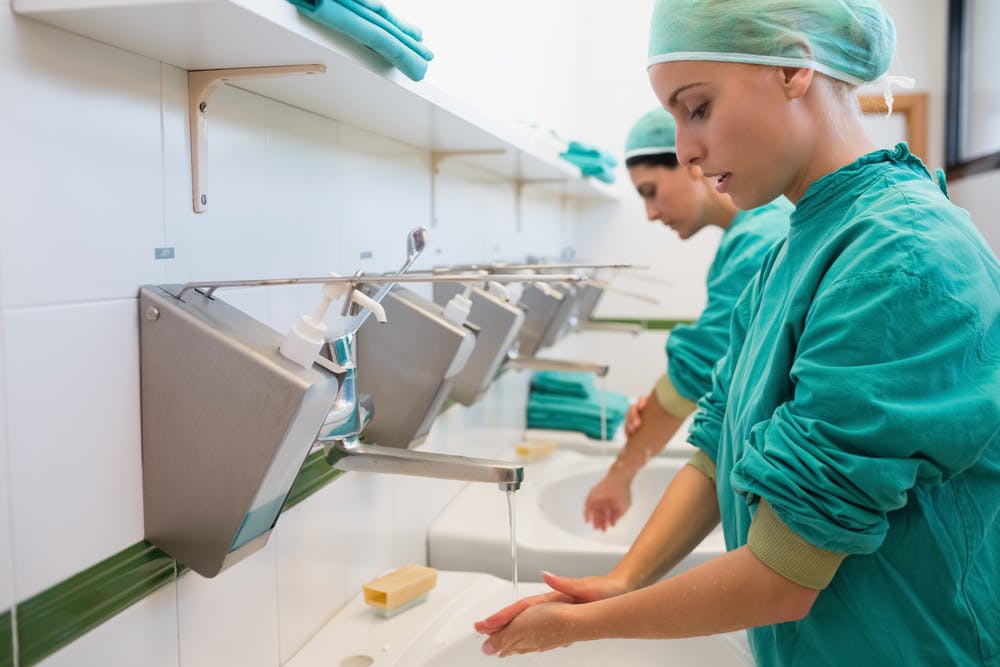Given the wide variety of pathogens that physicians deal with on a daily basis, rigorous hygiene is expected from every medical practice. While each medical office has its own cleaning regimen, the task of cleaning ultrasound probes goes beyond standard sanitation.
Without the proper protocols, ultrasound equipment can transmit pathogens like bacteria and viruses. Proper cleaning includes more than just the portions of ultrasound probes that come into contact with skin and other tissue; endocavity probes, even when covered, require a strict disinfection regimen. All physicians, including OB/GYNs, should stay up to date on the best practices for cleaning and disinfecting ultrasound equipment.
How Ultrasound Machines Can Transmit Pathogens
While it is normal for pathogens to live on human skin, they can become opportunistic when exposed to broken skin. As Michigan State University writes, organisms in the normal microbiota can exist on a healthy person without causing infection or disease; however, these organisms can set a disease process in motion when they are introduced to a person who is less healthy (for example, someone who is immunocompromised).
Failure to properly disinfect equipment after each ultrasound procedure and before each new patient visit can lead to this type of transmission between patients. For OB/GYN offices using transvaginal ultrasound, for example, the pathogens transmitted can sometimes include human papillomavirus.
The good news is that adequate training can make an enormous difference. A study published in European Radiology measured the colony-forming units (CFUs) of bacteria living on probes versus public surfaces such as toilet seats and bus poles. Researchers found a median of 53 CFUs living on probes used by untrained clinicians compared with a median of only 4 CFUs on public toilets and 28 CFUs on bus poles. After training, the CFUs living on probes dropped to zero.
High- vs. Low-Level Disinfection
First, clinicians should know the difference between low- and high-level disinfection. Low-level is adequate for equipment or surfaces that come into contact with intact skin. High-level disinfection is required for endocavity probes, or probes that come into contact with broken skin, mucus membranes or bodily fluids.
A myriad of infectious agents can remain on probes, even when covered; some of these agents, such as hepatitis C, may survive for extended periods of time after drying, according to research published in the Journal of Infectious Diseases.
Cleaning Agents and Methods
Use disinfectants recommended by your ultrasound manufacturer. Keep in mind that recommendations may be specific to the part being cleaned or disinfected, as some parts may be more susceptible to damage.
Make sure you understand the intended use of your disinfecting products. If your practice has any question about whether certain disinfectants are effective against specific diseases, the U.S. Environmental Protection Agency (EPA) provides robust documentation of commercial products and their efficacy. The EPA also offers a search feature to find the most effective antimicrobial products for any infectious pathogen. This feature shows the product registration number, name, manufacturer and even individual product labels, which include instructions for use, ingredient lists and warnings.
Seek out Trusted Sources
Old products may not work on new pathogens. When dealing with emerging infectious pathogens, the Centers for Disease Control and Prevention (CDC) is a good place to reference information on maintaining a safe environment for medical workers and patients. The CDC also has recommendations for cleaning facilities that have been exposed to patients who are infectious. Once again, check to see if your machine's manufacturer has a guide on disinfecting against new diseases.
The World Health Organization publishes its own comprehensive guide for decontaminating and reprocessing medical devices. Best practices statements on cleaning ultrasound probes and other equipment are available from The American Institute for Ultrasound Medicine and the European Federation of Societies for Ultrasound in Medicine and Biology.
Once your practice has mastered the basics of disinfecting ultrasound probes, be sure that the regimens in place are routinely followed. Employees should receive regular training in proper techniques so that there is no guesswork. To create a safe, healthy environment takes a bit of work, and will help ensure that your patients and staff are safe from unintended exposure.



